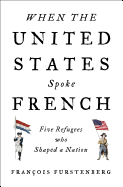
The 1790s were a pivotal time for the new United States of America. The fledgling nation's ally, France, was in revolutionary turmoil, while relations with England remained tense. Many French refugees--particularly the upper class--ended up in Philadelphia. More than 10% of the city's residents in the early 1790s were French, including five liberal reformers who'd been chased out of Paris by the mobs: Talleyrand (Napoleon's future foreign minister), the Duc de Liancourt (former president of the National Constituent Assembly), the Vicomte de Noailles (who served alongside Lafayette in the American Revolution), the Comte de Volney (a friend of Jefferson) and Moreau de Saint-Méry (who owned an influential bookstore).
The few years they each spent in Philadelphia saw major shifts in American foreign policy--including the signing of the Jay Treaty and the Alien and Sedition Acts--and foreshadowed the coming Louisiana Purchase. As the five men moved among Philadelphia society and traveled through the backwoods of the country, they observed a nation on the brink of dramatic expansion.
While the subtitle is slightly overstated, the broad scope of When the United States Spoke French is fascinating. Concerning himself with much more than just the five émigrés, history professor François Furstenberg (In the Name of the Father) details the adolescent identity crisis of an emerging nation, and how the United States would eventually establish itself as a power to rival England and France. History buffs are bound to appreciate the interconnectedness of this era. --Jessica Howard, blogger at Quirky Bookworm

